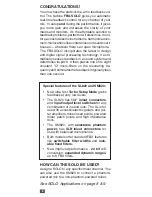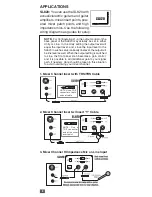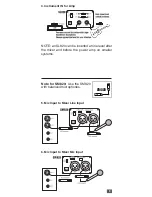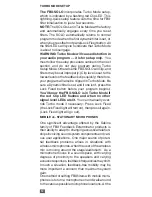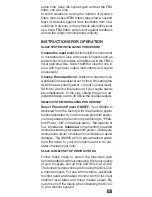
4
FREQUENCY RESPONSE TEST: Full Set-Up FBX
vs. 1/3-Octave Graphic Equalizer. Test procedure: A
PA system was set up using a microphone, mixer, FBX,
power amp and two speakers. The system's gain was
raised until the FBX removed six feedback points. Next,
the FBX was replaced with a 1/3-octave graphic EQ.
The EQ was adjusted while the input was raised to the
same level achieved with the FBX. The frequency
response curves of each device were then plotted.
What this means to you: Doubling the cost of your
microphones, speakers and power amp probably would
not improve your system's frequency response as much
as replacing your EQ with an FBX for chasing feed-
back.
A DIRECT HIT ON FEEDBACK! The FBX-SOLO
targets feedback without taking a big chunk out of
your sound. Tests prove that a single 1/3-octave EQ
slider pulled down 12 dB removes almost half the
power going to the speakers over a two-octave
range. And, as the illustration above shows, you
can't place a graphic EQ filter precisely on the
ringing frequency. When you pull down multiple
sliders in a normal setup (below), you end up with
giant holes in your sound. On the other hand, FBX
constant "Q" micro-filters are 10 times narrower -
you get back up to 90% of the power you lose with
a graphic EQ! That means more gain before feed-
back and no loss in sound quality.


